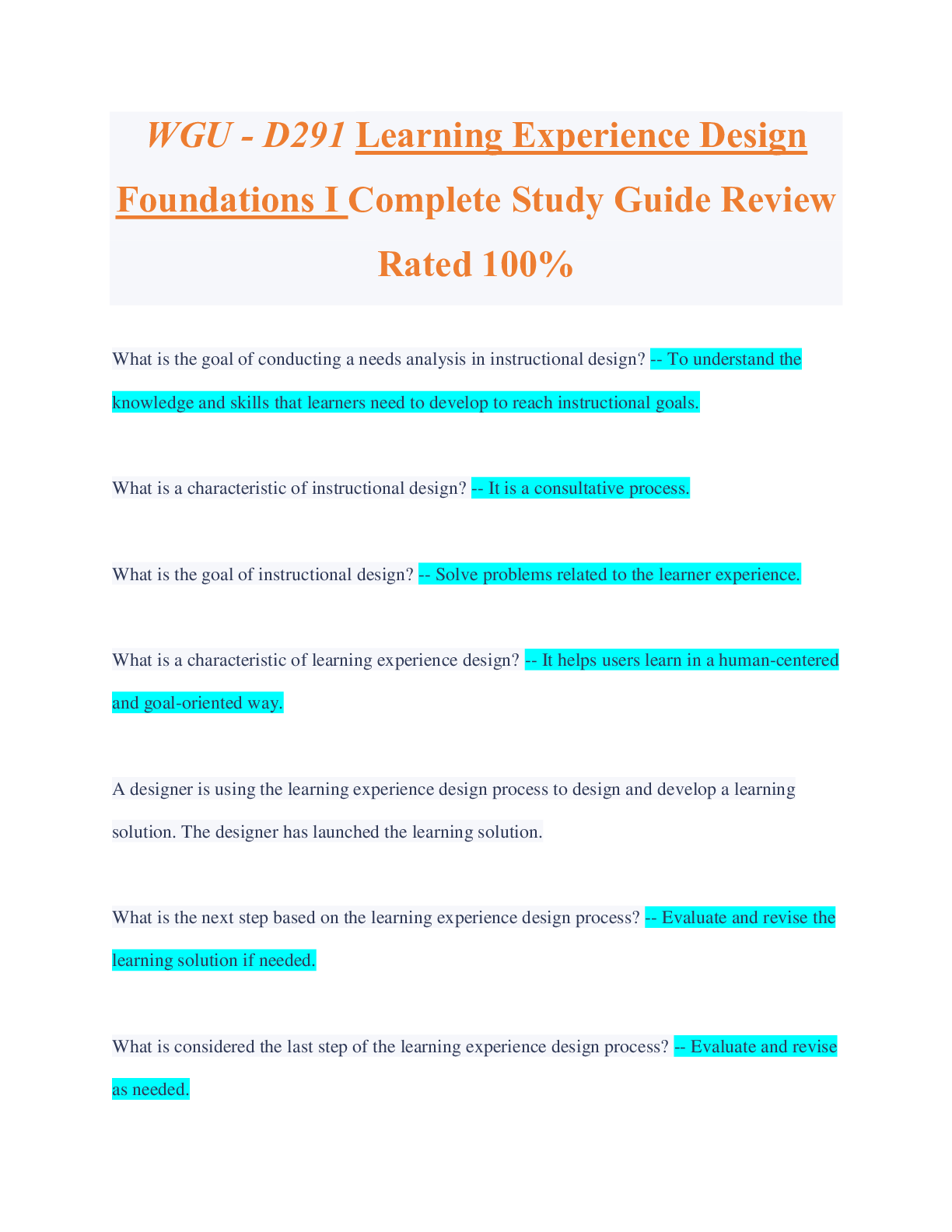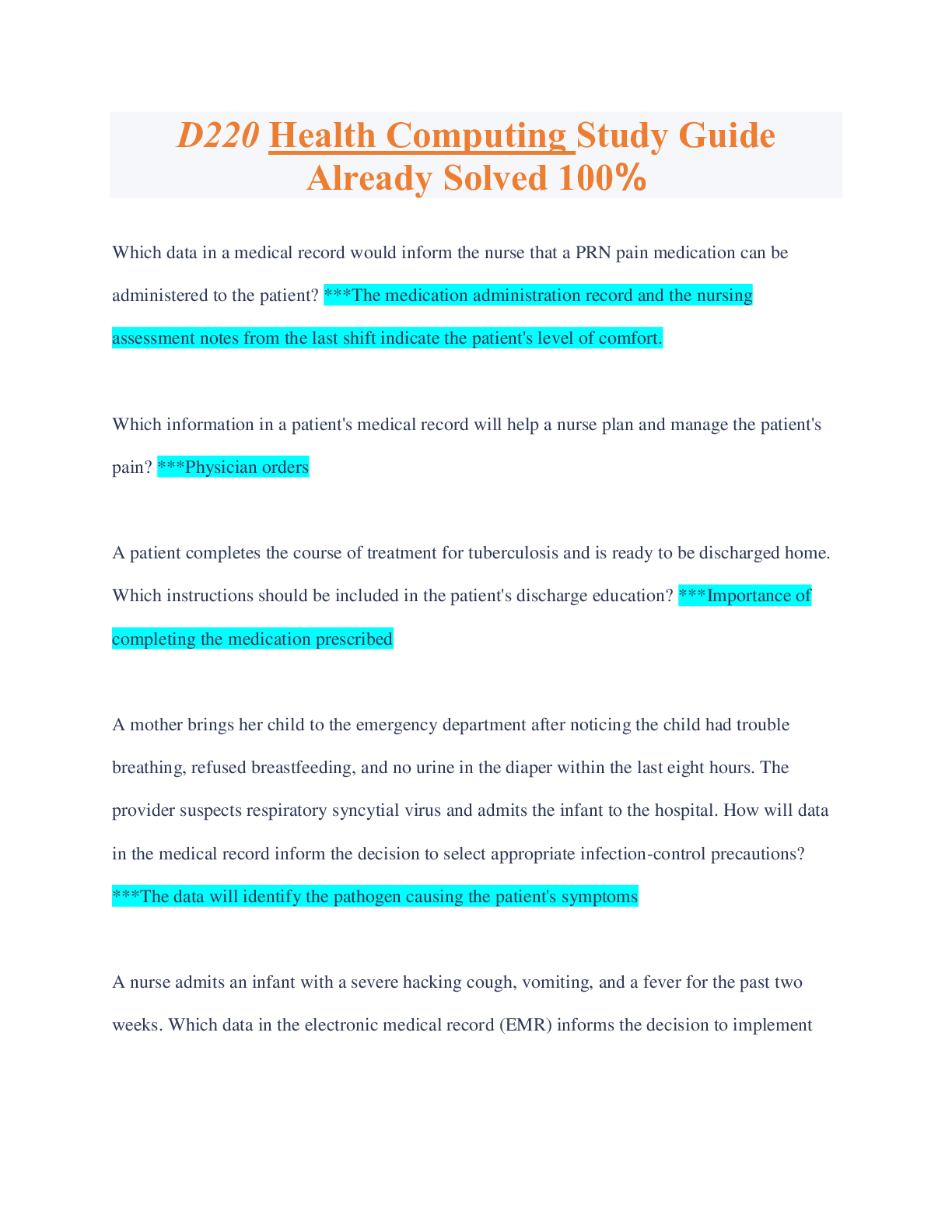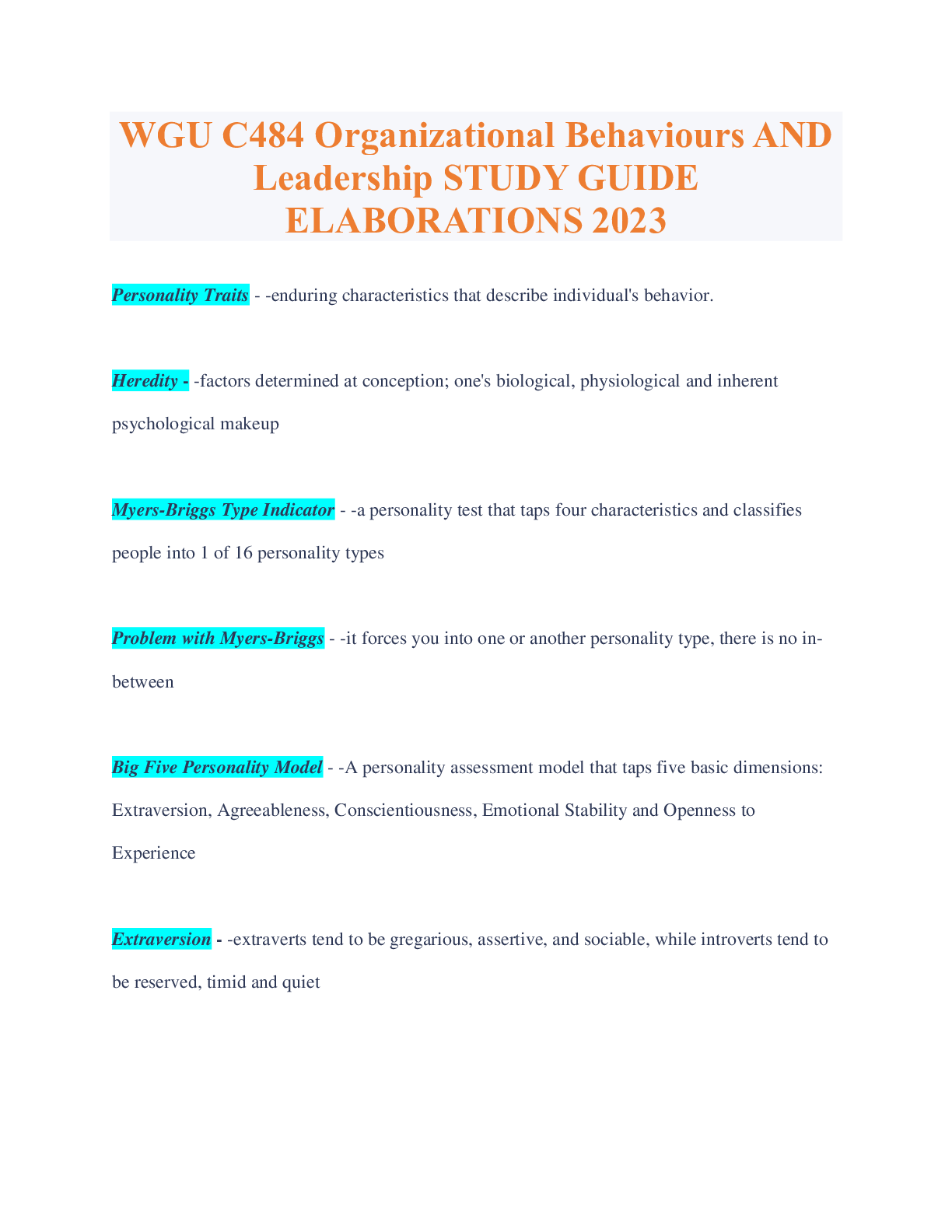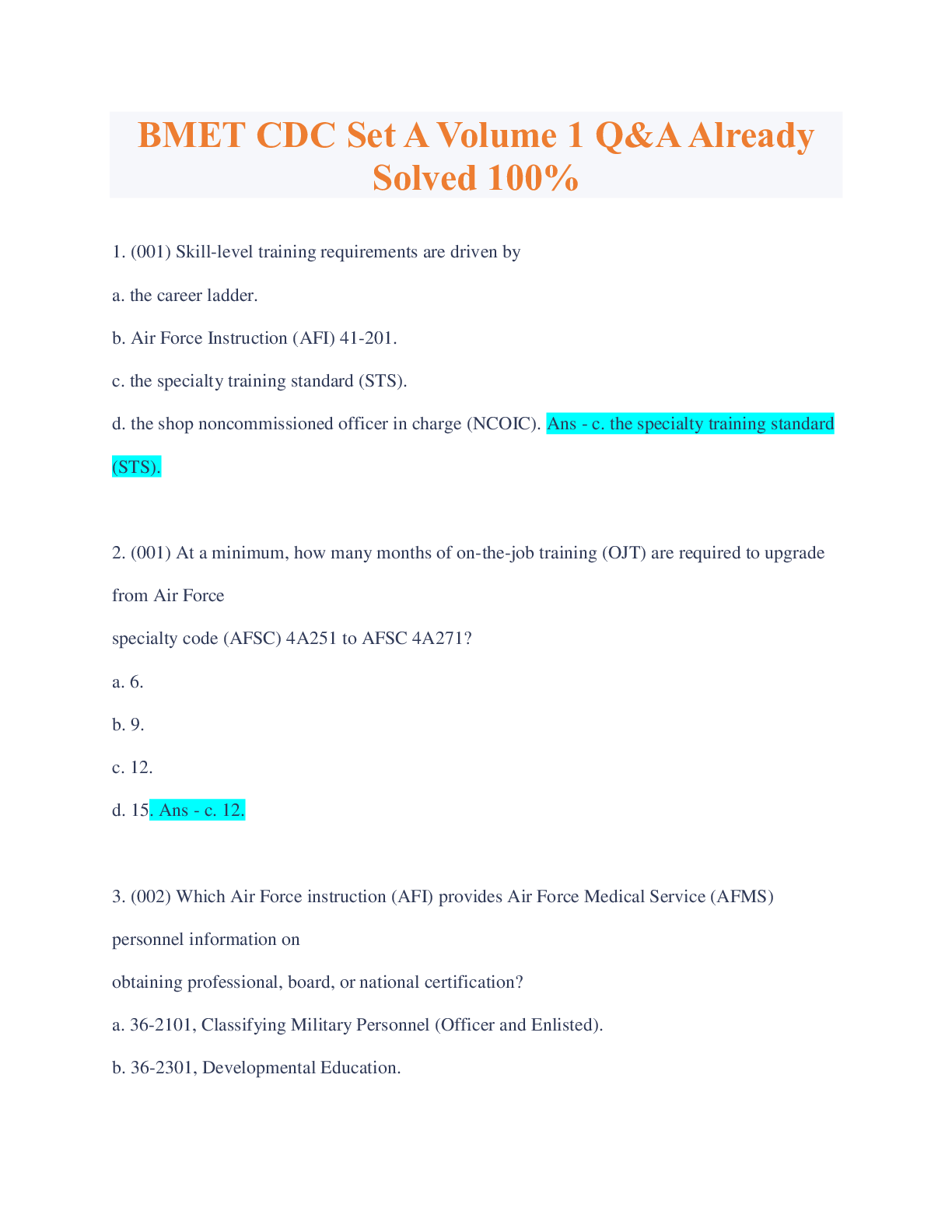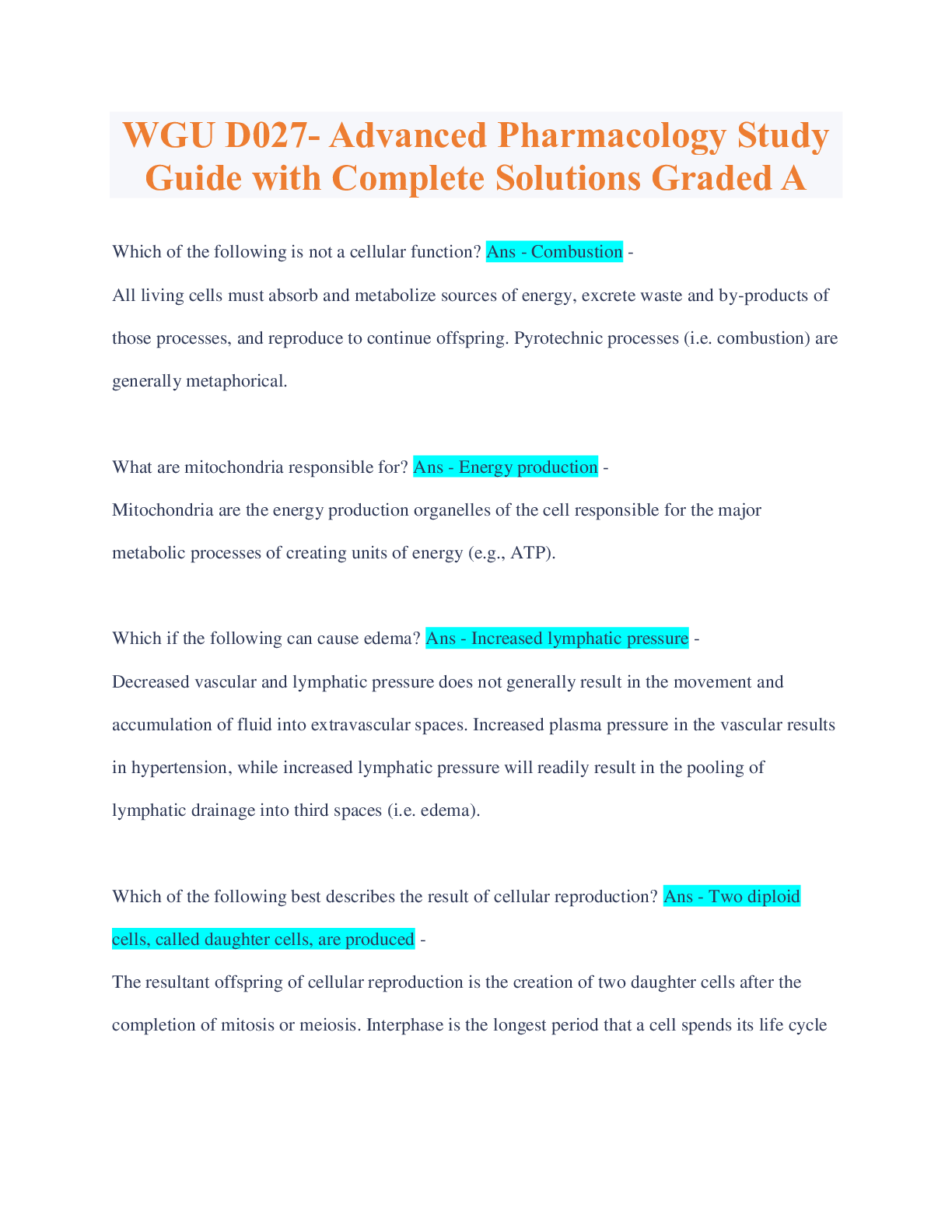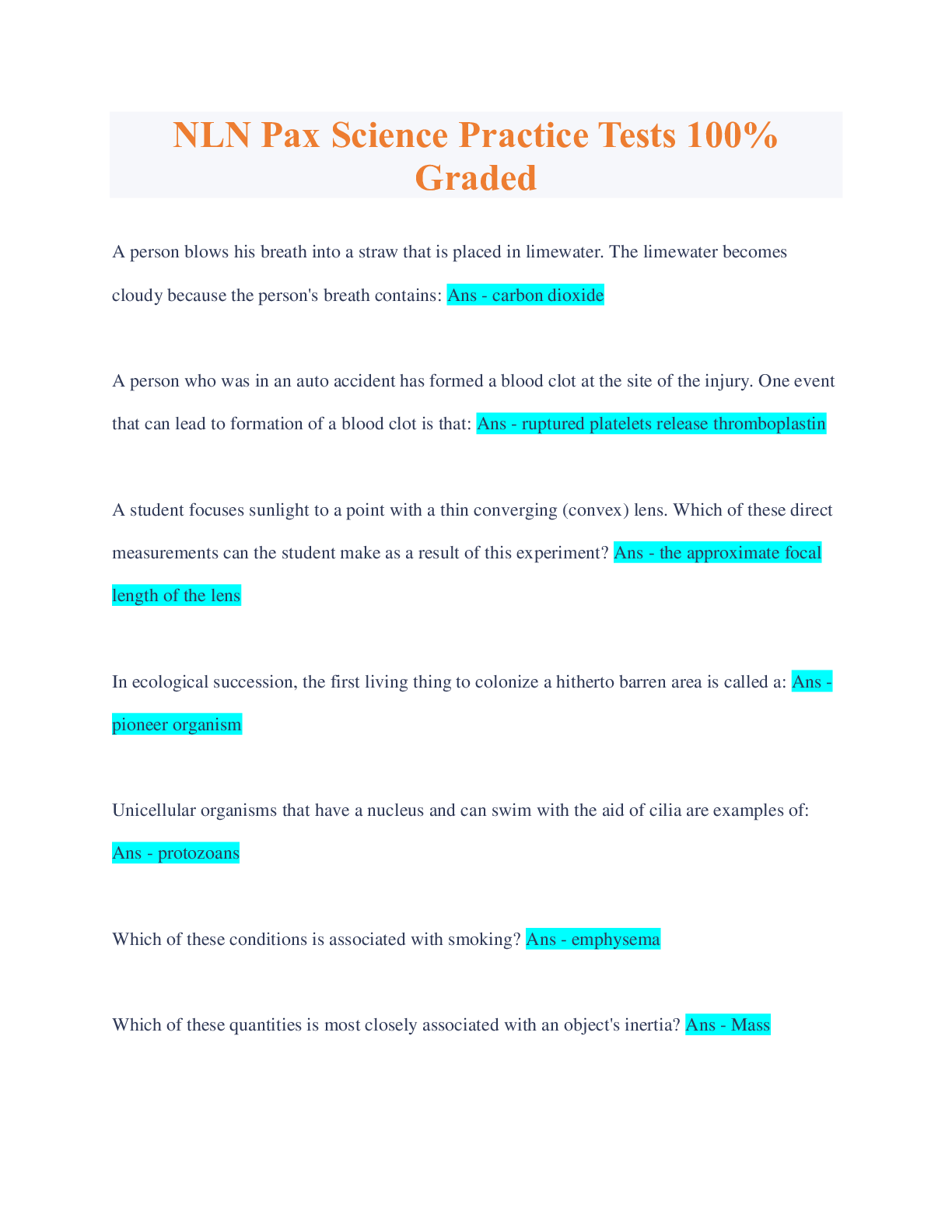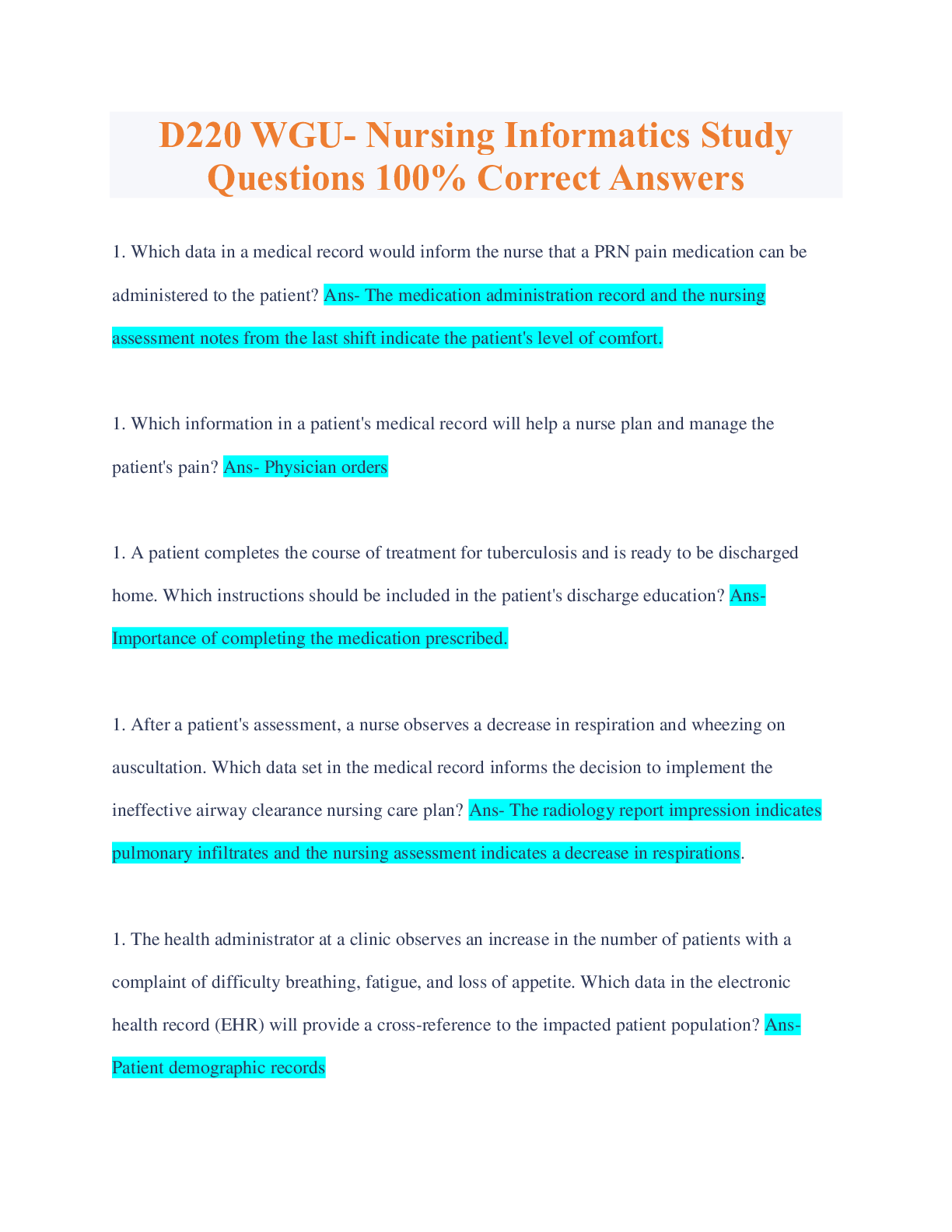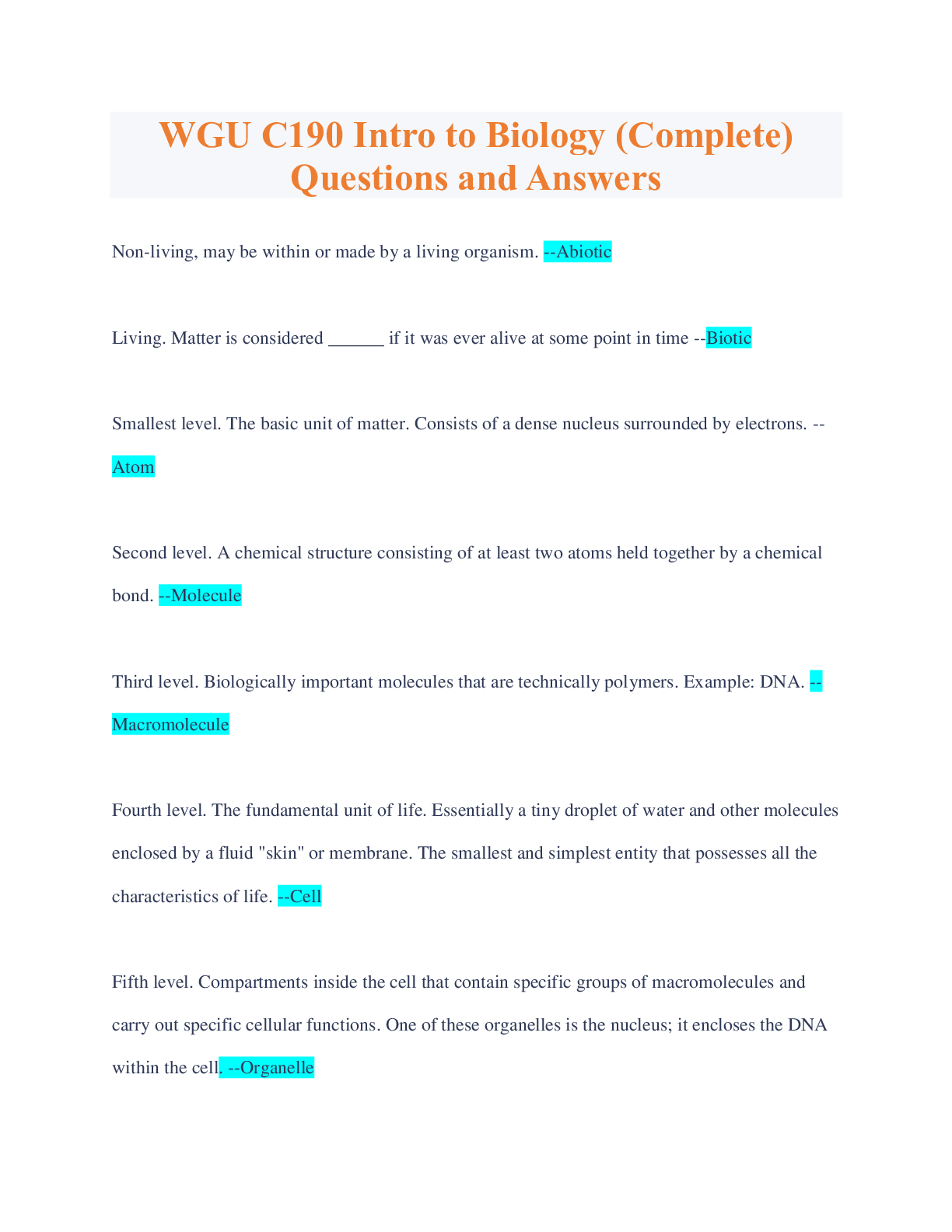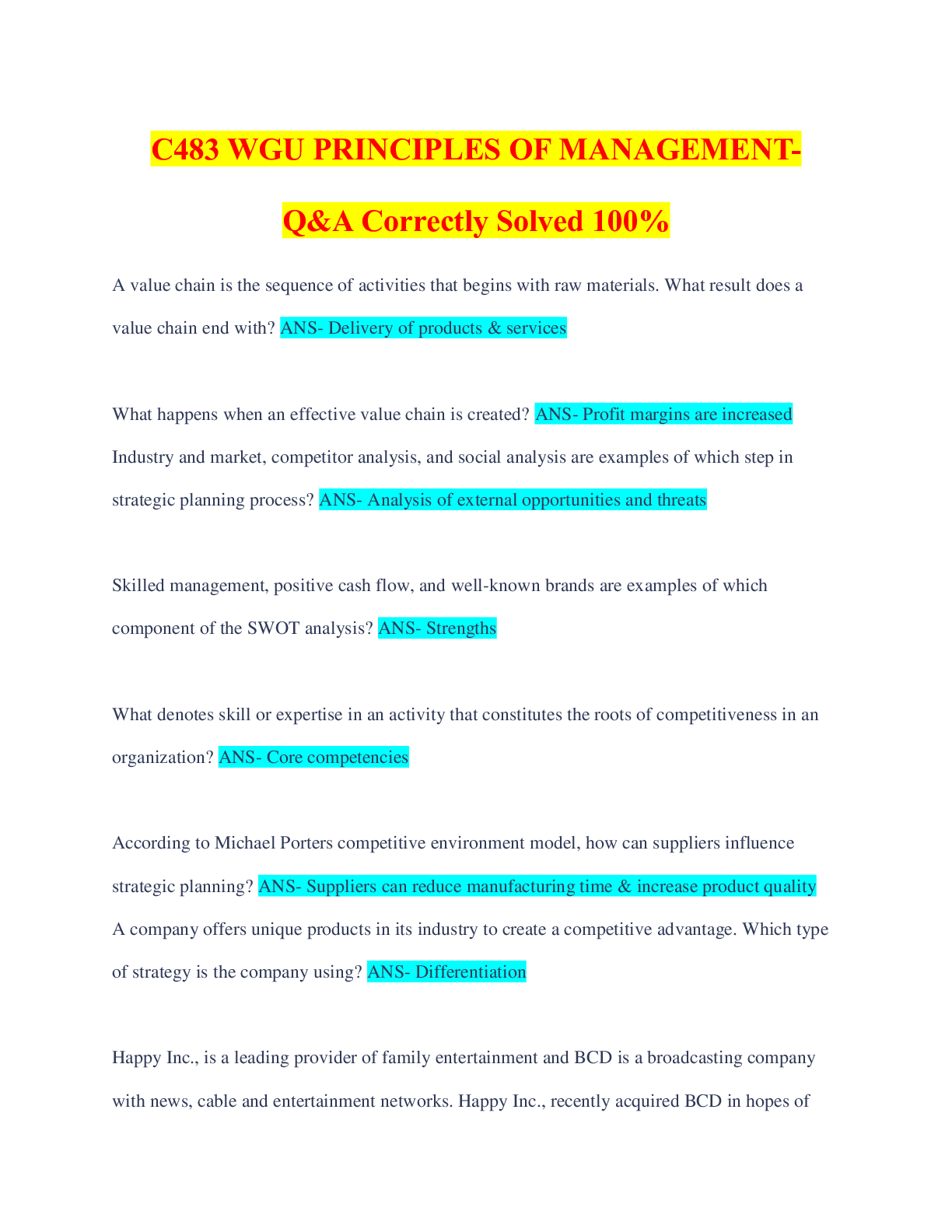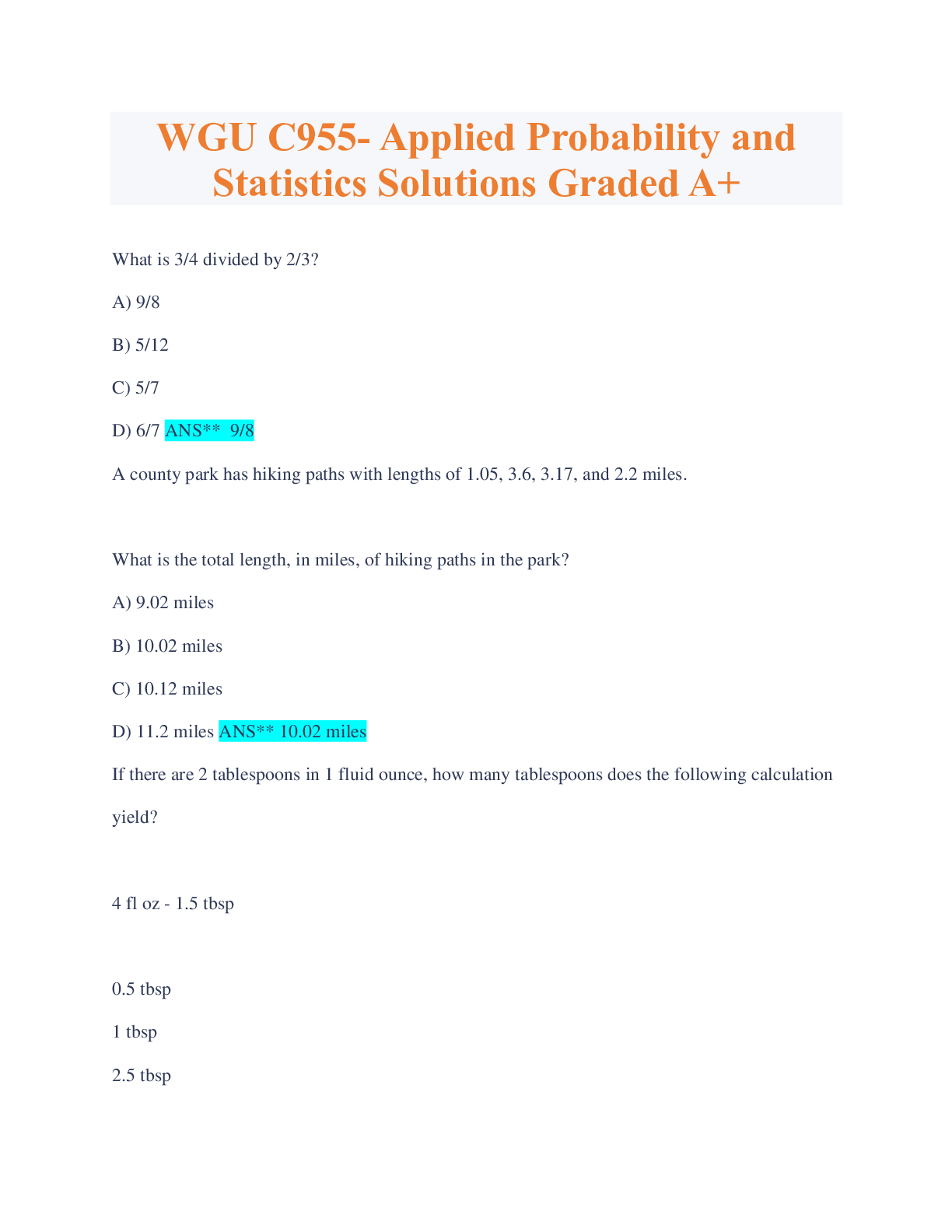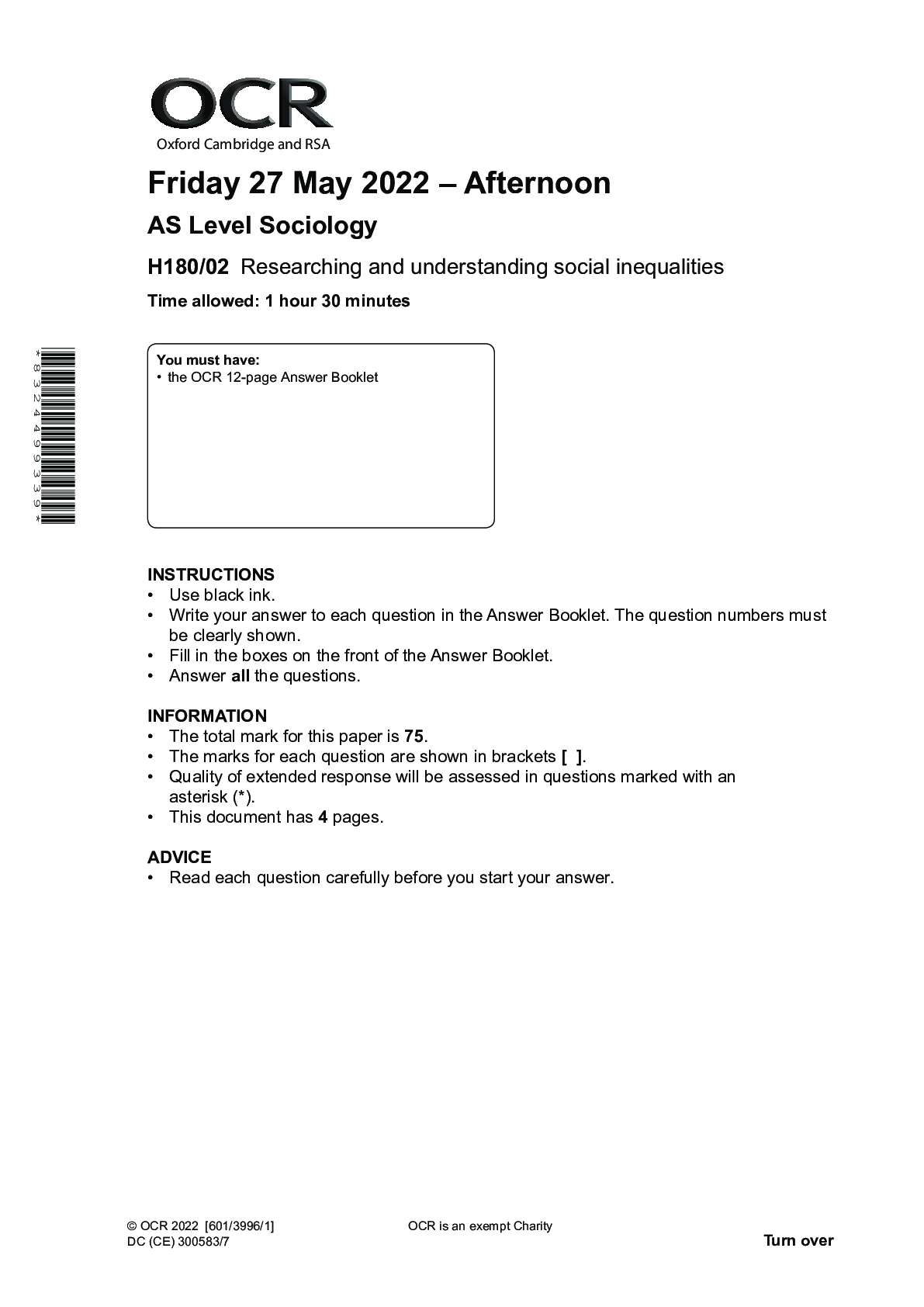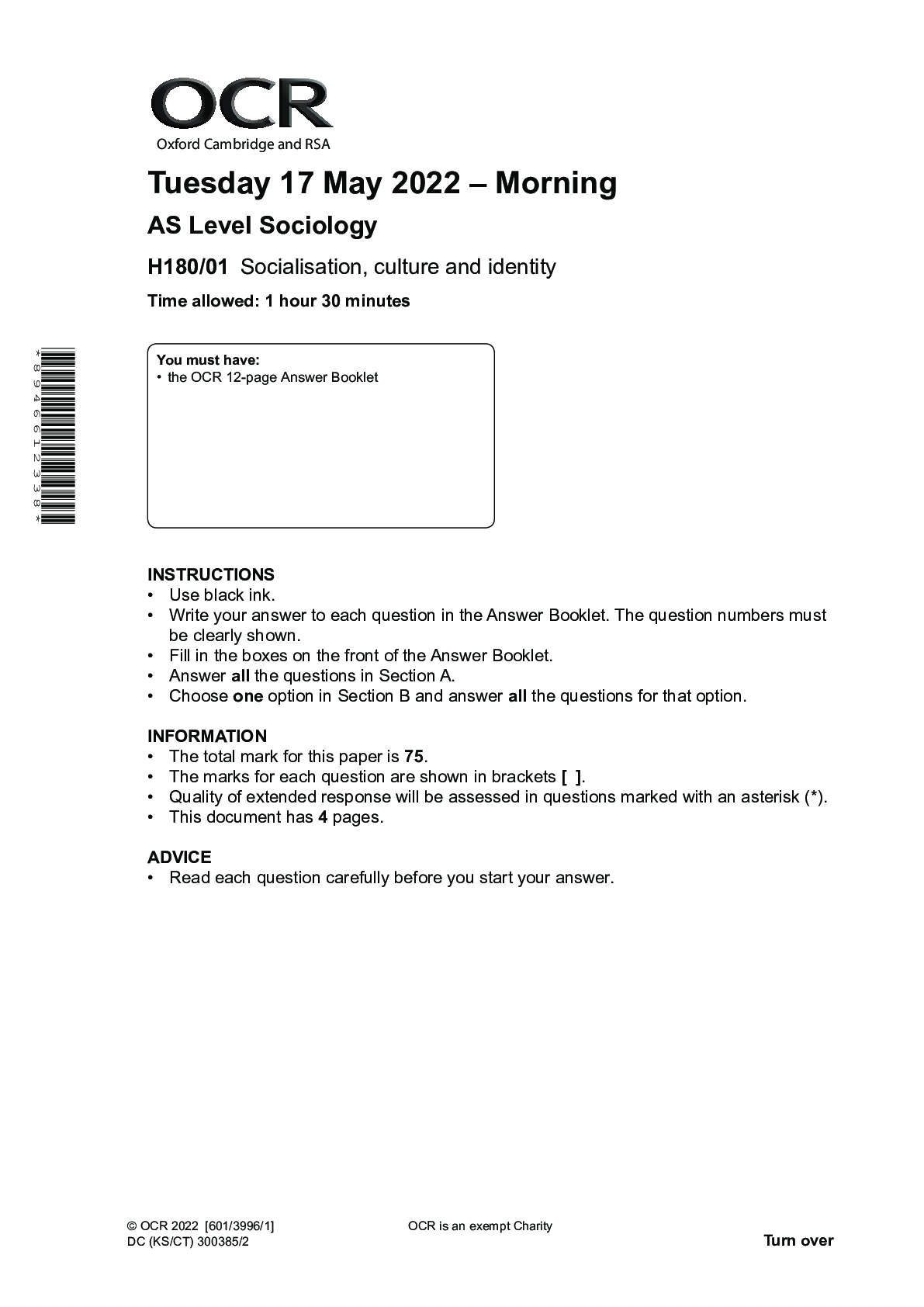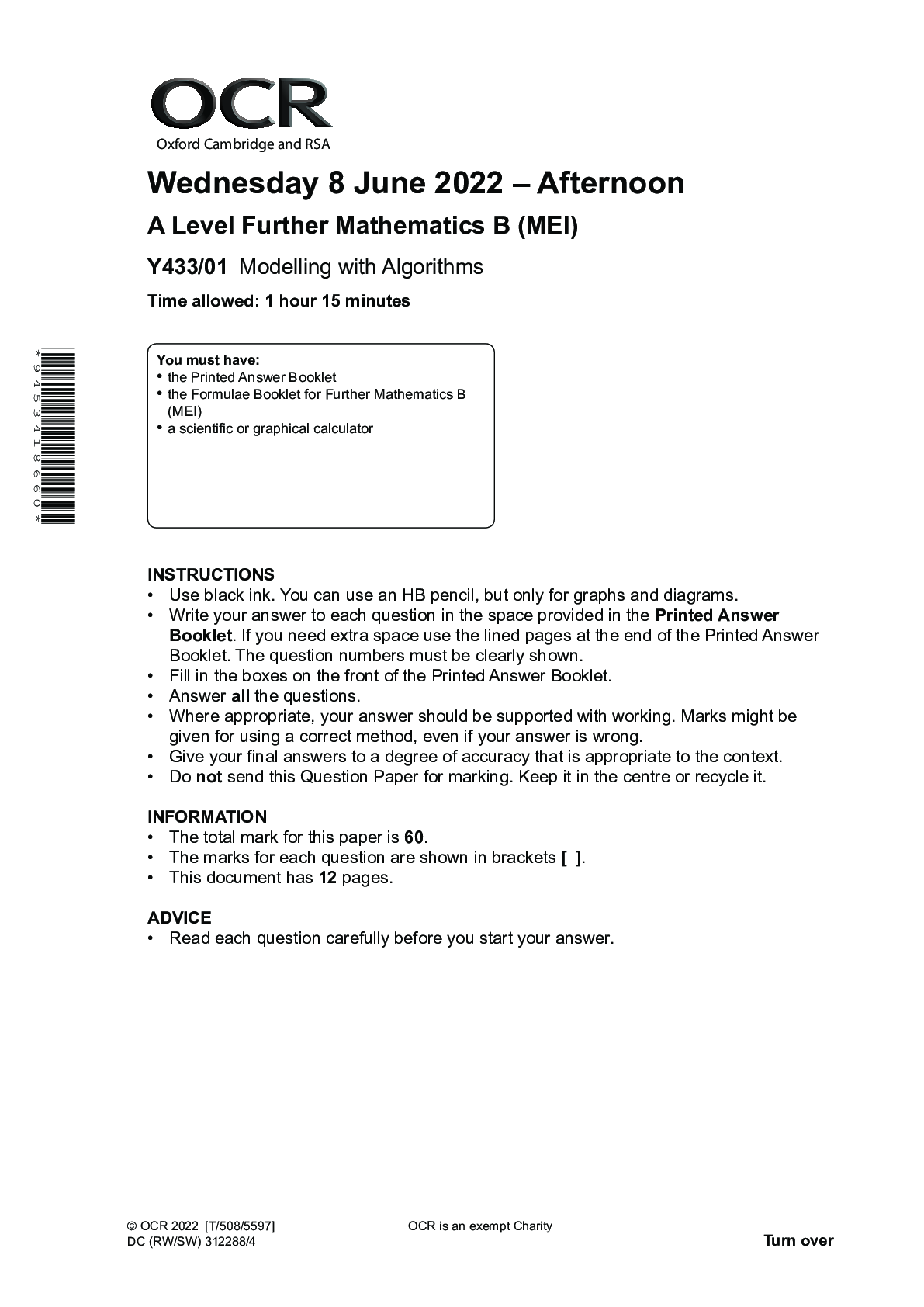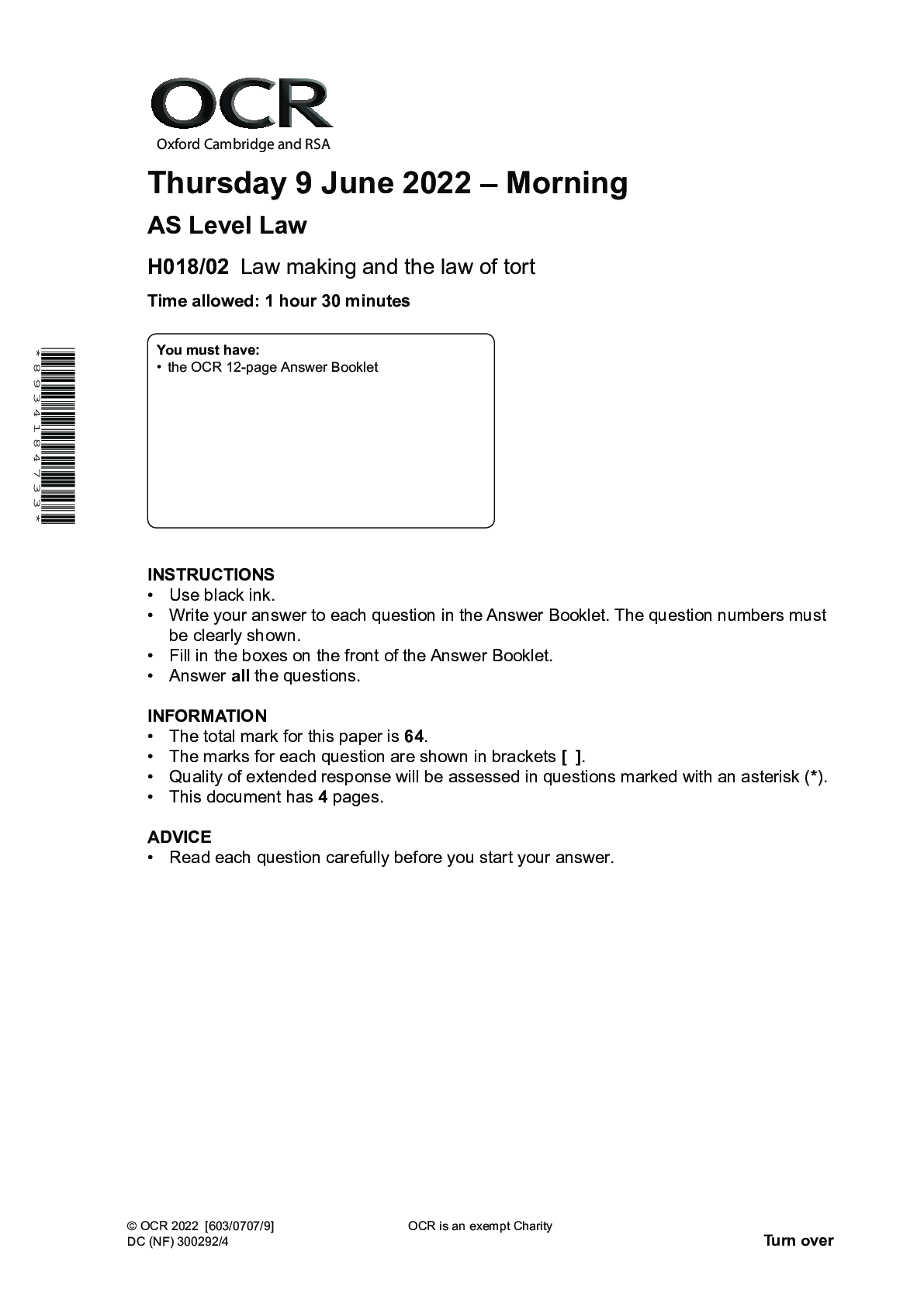Pharmacology > AQA A/As Level Question Paper > WGU D027- Advanced Pharmacology Study Guide with Complete Solutions Graded A (All)
WGU D027- Advanced Pharmacology Study Guide with Complete Solutions Graded A
Document Content and Description Below
Which of the following is not a cellular function? Ans - Combustion - All living cells must absorb and metabolize sources of energy, excrete waste and by-products of those processes, and reproduce to... continue offspring. Pyrotechnic processes (i.e. combustion) are generally metaphorical. What are mitochondria responsible for? Ans - Energy production - Mitochondria are the energy production organelles of the cell responsible for the major metabolic processes of creating units of energy (e.g., ATP). Which if the following can cause edema? Ans - Increased lymphatic pressure - Decreased vascular and lymphatic pressure does not generally result in the movement and accumulation of fluid into extravascular spaces. Increased plasma pressure in the vascular results in hypertension, while increased lymphatic pressure will readily result in the pooling of lymphatic drainage into third spaces (i.e. edema). Which of the following best describes the result of cellular reproduction? Ans - Two diploid cells, called daughter cells, are produced - The resultant offspring of cellular reproduction is the creation of two daughter cells after the completion of mitosis or meiosis. Interphase is the longest period that a cell spends its life cycle and is the preparatory stage before cellular reproduction. Anaphase is the separation of genetic materials to the opposing centromeres of the cell, followed by telophase. What indicates hypokalemia? Ans - Serum K decreases to less than 3.5 - Normal serum potassium (K), also known as eukalemia, is generally 3.5-5.5 mEq/L, with some variations of +/- 0.1-0.3 mEq/L depending on the laboratory testing, age, and other potential patient-specific conditions and variations. Alterations in fluid volume or the administration of a supplement alone do not necessarily contribute to the development of hypokalemia. What is an example of both hyperplasia and hypertrophy? Ans - Uterine enlargement due to pregnancy - Hyperplasia is the increase in the number of cells of an organ or tissue, while hypertrophy is the enlargement of the cells of a given organ or tissue without a change in the number of cells. Muscle cells grow and enlarge (hypertrophy) in response to increased work or stress from exercise or increased cardiovascular pressures. When a liver is damaged or part of it is removed, it is the one internal solid organ capable of regeneration to repair itself creating more cells (hyperplasia). During pregnancy, the uterus must both grow to create more cells and enlarge those existing cells in preparation for the support of a fetus. [Show More]
Last updated: 9 months ago
Preview 1 out of 68 pages
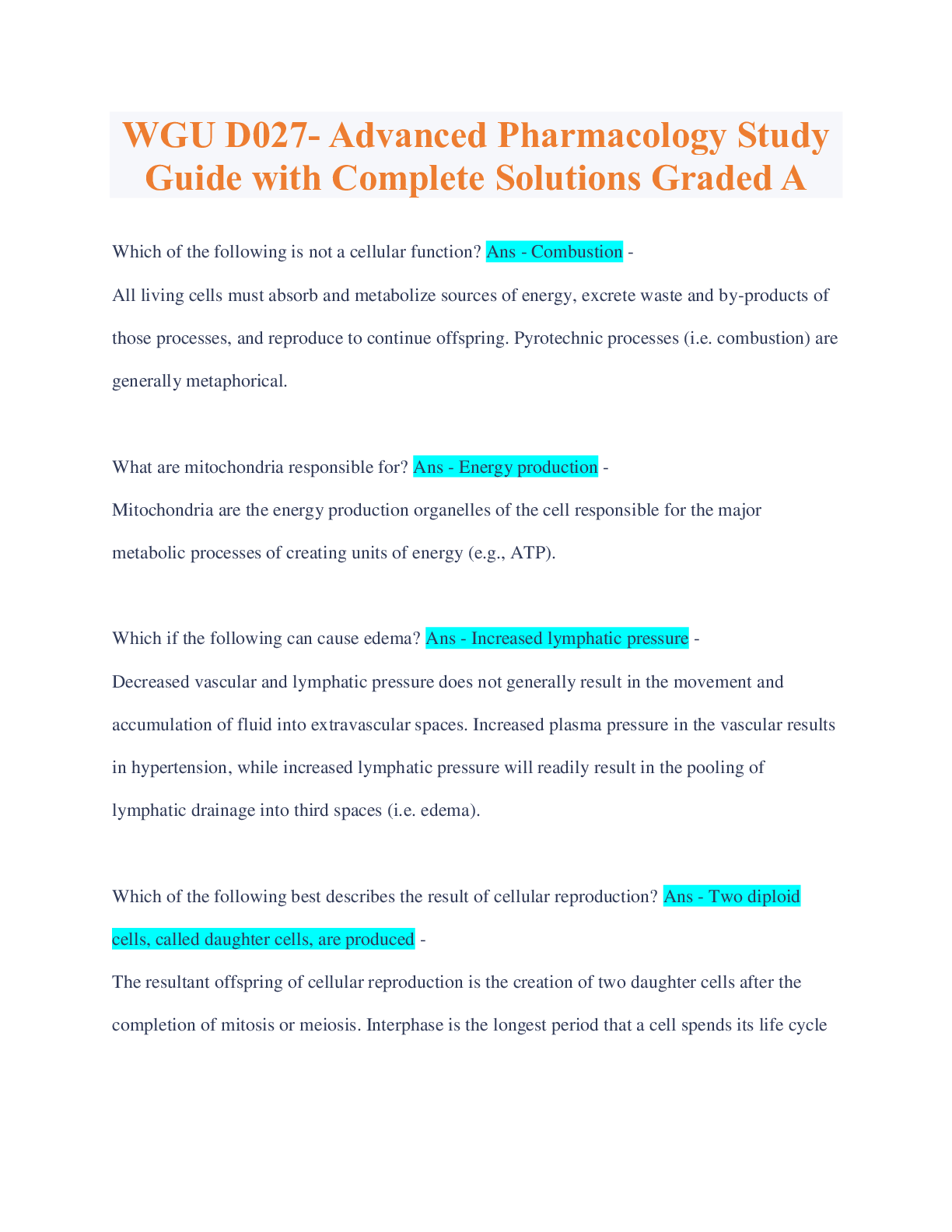
Reviews( 0 )
Document information
Connected school, study & course
About the document
Uploaded On
Jul 19, 2023
Number of pages
68
Written in
Additional information
This document has been written for:
Uploaded
Jul 19, 2023
Downloads
0
Views
20

